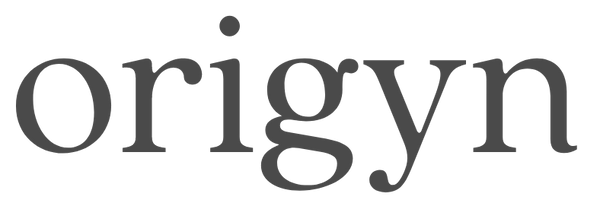
Embracing a Regenerative Economy
Share
At Origyn, we believe fashion is not just about style; it’s about the future. As we continue to grow our eco-conscious brand, we are inspired by the idea of a regenerative economy—a model that goes beyond sustainability, actively restoring and enhancing the health of the planet and its communities. In a world that has long operated on a linear, extractive economic model—one that takes, makes, and disposes—a regenerative economy represents a revolutionary shift. But what exactly does it mean, and how does it apply to the world of fashion?
What is a Regenerative Economy?
A regenerative economy is one that restores, renews, and regenerates the resources it uses, moving away from a mindset of endless consumption and extraction. Unlike traditional capitalism, which often values profits over the health of the planet, a regenerative economy recognizes that human and environmental well-being are interconnected. This model focuses not just on reducing harm but on actively improving the systems that sustain us—whether that’s through restoring ecosystems, promoting biodiversity, or improving social equity.
For fashion, this means designing and producing products that work in tandem with nature and society. It’s about circularity, regeneration, and fostering deep connections with the earth and the communities we engage with.
Why Regeneration Matters for Fashion
The fashion industry is one of the largest polluters in the world, responsible for significant environmental damage through water usage, waste, and carbon emissions. At Origyn, we understand that the fashion industry cannot continue on its current trajectory. We see regeneration not just as a necessity but as an opportunity to redefine how fashion is made, consumed, and valued.
By embracing a regenerative approach, we shift our focus from creating products that merely “sustain” to creating products that enhance—products that, through their design, production, and lifecycle, help to (ideally) restore the ecosystems and communities we engage with. This model demands that we think beyond profit margins and consider the long-term impact of our actions on the world around us.
How Origyn is Implementing a Regenerative Economy
-
Materials that Heal
At Origyn, we’re exploring the potential of ethical and regenerative materials, such as MIRUM® from Natural Fibre Welding. MIRUM® proudly boasts ZERO PLASTICS, NO ACRYLIC COATING, NO PU BINDERS—affirming its commitment to a plastic-free and eco-friendly product. Using recycled and virgin plant materials such as coconut husks (a byproduct of the coconut water and oil industry), cork power (a product from the manufacture of wine stoppers), and natural rubber (from Forest Stewardship Council (FSC) certified inputs), natural colorants, and a proprietary curative process, MIRUM® can be used at end-of-life as a soil additive or can be transformed back into more MIRUM®. Another area of interest for us is wool from well-managed Ontario farms, which not only have a lower environmental footprint than synthetic alternatives but also contribute to soil health through sustainable farming practices. Overall, we are focusing on natural fibers that biodegrade and leave no lasting environmental impact, thus minimizing waste in landfills. -
Circularity at Every Stage
The cornerstone of a regenerative fashion model is circularity. We are dedicated to creating products that can be reused, remade, or recycled—closing the loop on waste. By designing products with longevity in mind and incorporating repairability into their life cycles, we ensure that every piece we create has the potential for multiple lifetimes. (More on this is an upcoming blog post!) -
Repair, Not Replace
A key component of our approach is encouraging customers to see the value in repair, rather than replacing items. This aligns with our belief in valuing resources over time and extending the lifespan of each product. -
Ethical Manufacturing and Fair Labor
Regeneration isn’t just about the planet—it’s also about people. We are committed to working with production partners who share our values, ensuring that every piece of Origyn’s collection is produced under fair and ethical working conditions. By fostering ethical production models, we create an ecosystem where workers are truly valued.
Looking Forward: Fashion as a Force for Good
At Origyn, we see the regenerative economy as a blueprint for the future of fashion—a future where businesses are an integral part of the ecological and social fabric of the world. We’re committed to pushing the boundaries of what is possible in sustainable design, but we also recognize that the journey is long and requires collaboration, innovation, and persistence.
Regeneration isn’t just a trend; it’s a movement. By shifting from an extractive to a regenerative model, we are not only changing the way we do business but also reimagining what it means to be part of a fashion ecosystem that nurtures the world it exists within.
Our commitment to a regenerative economy is part of our ongoing effort to bring fashion into alignment with the health of the planet and the well-being of all people. Through conscious design, responsible production, and mindful consumption, we are working to build a future where fashion can be a positive force for change—one that celebrates the beauty of the earth while restoring and protecting it for generations to come.
